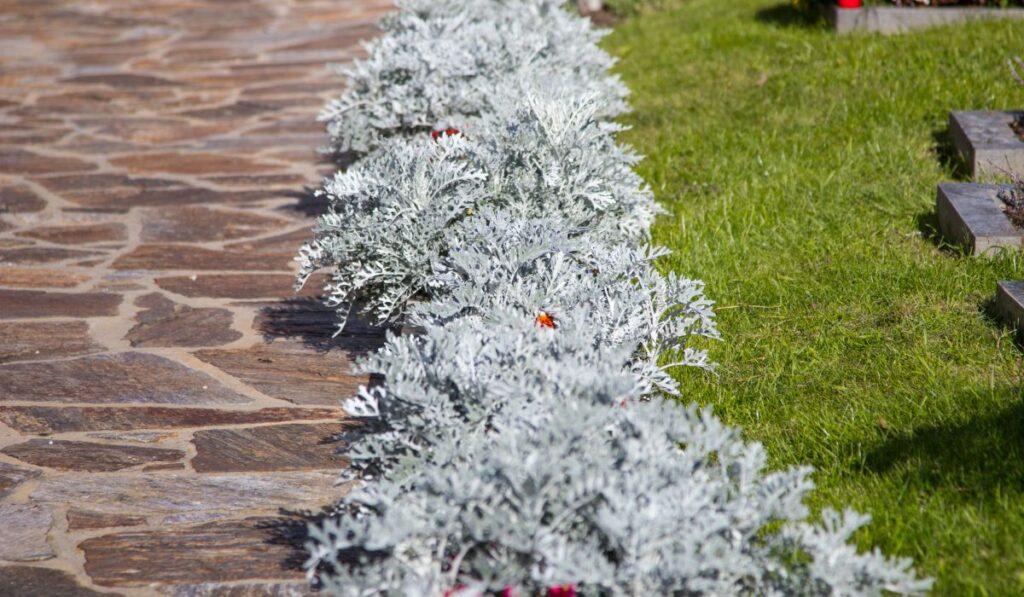Creating a Pollinator Paradise: Plants That Attract Bees and Butterflies in Rohnert Park, California
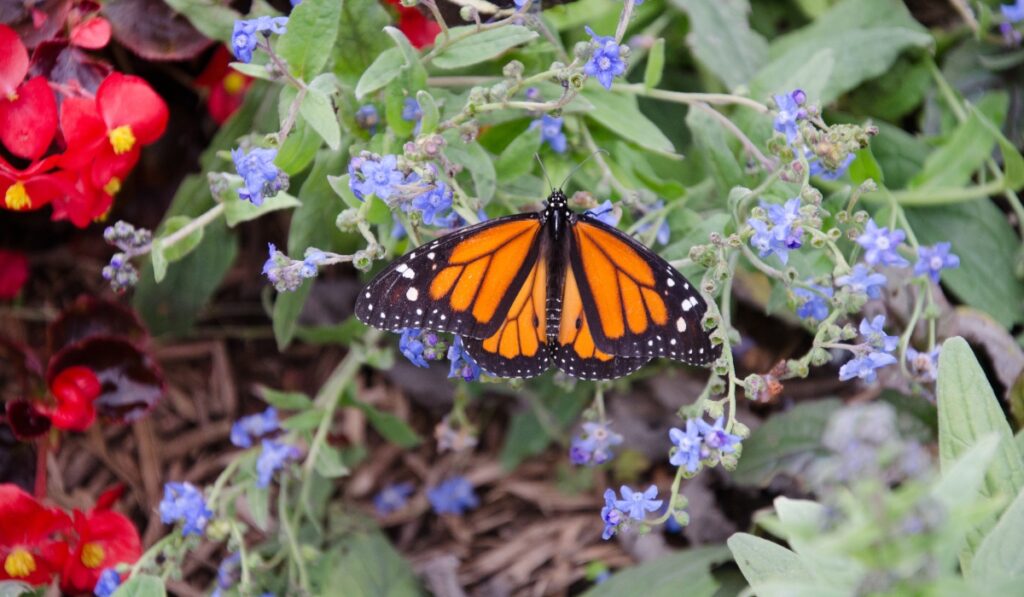
Transforming your garden into a haven for pollinators not only contributes to the local ecosystem’s health but also brings life and beauty to your yard. For residents of Rohnert Park, California, fostering a landscape that invites bees and butterflies is both a rewarding endeavor and a step toward sustainability. Here’s how you can create your own pollinator paradise with plants ideally suited for our climate and region.
Why Focus on Pollinators?
Pollinators like bees and butterflies are essential to the propagation of many plants and crops. By attracting these beneficial insects, you’re helping to support biodiversity, which is crucial for ecological balance. Plus, watching these creatures flit from flower to flower adds an element of dynamic beauty to your garden.
Choosing the Right Plants
Selecting native plants that thrive in the Rohnert Park area ensures lower maintenance, better survival rates, and a natural appeal to local pollinators. Here are some top choices to consider:
1. California Poppy (Eschscholzia californica) – This state flower is not only vibrant and drought-tolerant but also a favorite among bees. Its golden blooms add a splash of color to any garden from early spring through fall.
2. Lavender (Lavandula) – With its soothing fragrance and lovely purple spikes, lavender is irresistible to bees and butterflies. It’s also drought-resistant, making it ideal for California gardens.
3. Sage (Salvia) – There are several native sages to choose from, like Cleveland sage (Salvia clevelandii), which is highly aromatic and attracts a variety of bees and hummingbirds.
4. Manzanita (Arctostaphylos) – Early blooming manzanita provides nectar and pollen during late winter and early spring, a crucial time for many pollinators.
5. Milkweed (Asclepias spp.) – As the breeding ground for monarch butterflies, milkweed is essential for their lifecycle. It’s a must-have for any butterfly garden.
6. Sunflower (Helianthus annuus) – Bees love sunflowers, and their large, bold faces are a cheerful addition to any setting.
7. Penstemon – With their tubular flowers, penstemons are particularly attractive to hummingbirds and butterflies.
Design Tips for Pollinator Gardens
- Group Similar Plants Together: Clusters of the same plant species are more likely to attract pollinators than single plants scattered throughout the landscape.
- Provide a Water Source: A simple birdbath or even a shallow dish with rocks and water can provide pollinators with the hydration they need.
- Avoid Pesticides: Chemicals can harm the very creatures you’re trying to attract. Opt for organic pest control methods to keep your garden safe for pollinators.
- Incorporate Year-Round Blooms: Choose a variety of plants that bloom at different times throughout the year to provide a constant food source for bees and butterflies.
The Bigger Picture
By creating a pollinator-friendly garden, you’re contributing to the preservation of local wildlife and promoting ecological diversity. The beauty of such a garden is that it’s not only a sanctuary for pollinators but also a tranquil retreat for you and your family.
At DK Landscaping, we are committed to helping Rohnert Park residents create beautiful, sustainable landscapes. Contact us today to learn more about planting a pollinator paradise in your backyard, and let’s make a positive impact together!
The Benefits of Professional Landscaping on Property Value in California

In California, where the climate and outdoor lifestyle play a significant role in everyday life, the appeal of a well-maintained landscape cannot be overstated. Whether you’re in bustling cities like Los Angeles, charming coastal towns, or the serene suburbs of Rohnert Park, professional landscaping offers more than just aesthetic enhancement. It significantly boosts property value and has a profound impact on curb appeal. Here’s a deeper look at how professional landscaping can be a wise investment for California homeowners.
Enhanced Curb Appeal
First impressions are crucial, and the exterior of your home is the first thing potential buyers see. A professionally landscaped property with lush greenery, balanced designs, and vibrant colors instantly boosts curb appeal, making your home stand out in the market. Well-chosen plants and hardscape elements that complement the architectural style of your home can create a compelling first impression that increases overall marketability.
Increased Property Value
Studies have shown that professional landscaping can increase a property’s value by up to 15%. In California’s competitive real estate market, this can translate to a significant return on investment. The aesthetic and functional improvements made through landscaping not only add immediate value but also contribute to long-term property appreciation.
Cost-Effective Renovations
Compared to other home renovations like kitchen remodels or adding a swimming pool, landscaping is a cost-effective way to enhance property value. The modifications can be as simple as adding flower beds, installing a new lawn, or as elaborate as creating outdoor living spaces with kitchens and fire pits. Each project can be tailored to fit a variety of budgets and still yield high returns.
Reduced Time on Market
A well-landscaped property not only attracts more buyers but can also lead to a quicker sale. Homes with mature gardens and thoughtful layouts tend to sell faster than their barren counterparts. This is particularly important in markets where the speed of sale can be as critical as the sale price.
Improved Energy Efficiency
Professional landscaping can also improve the energy efficiency of your home. Proper placement of trees and shrubs can provide shade during the hot California summers, reducing the need for air conditioning. Additionally, greenery can act as a windbreak and insulate the home during cooler months, reducing heating costs.
Eco-Friendly Benefits
In a state that values sustainability, professional landscaping using native plants and eco-friendly practices can also appeal to environmentally conscious buyers. Techniques such as xeriscaping, efficient irrigation systems, and the use of mulch contribute to a landscape that requires less water and maintenance, which is particularly appealing in drought-prone areas like California.
Aesthetic and Functional Harmony
A professional landscaper can strategically design your outdoor space to balance aesthetics with functionality. This means creating spaces that are not only beautiful but also usable, such as outdoor seating areas, vegetable gardens, and pathways that enhance the living experience and appeal to a broader range of buyers.
Partner with DK Landscaping
At DK Landscaping, we understand the unique climatic and cultural nuances of landscaping in California. We are committed to transforming your outdoor spaces in ways that not only reflect your personal style but also maximize your property’s value and appeal. Contact us today to learn how our expert services can enhance your property in Rohnert Park and beyond, setting the stage for a rewarding and profitable sale.
Transform Your Garden into a Paradise: Tips from KD Landscaping

Creating a garden that feels like a slice of paradise is a rewarding journey, one that enriches both your home and wellbeing. It’s about crafting a space that speaks to your soul, offering a retreat from the hustle and bustle of everyday life. Whether you have a sprawling lawn or a modest balcony, transforming your garden into a personal Eden is achievable with a blend of creativity, planning, and a touch of nature’s magic.
Envision Your Paradise
Begin by envisioning what paradise means to you. Is it a serene Zen garden, a vibrant floral oasis, or a cozy nook brimming with greenery? Consider your space, climate, and the amount of time you can dedicate to garden maintenance. Crafting a mood board can help solidify your vision, combining elements like plants, colors, and themes that resonate with your concept of paradise.
Select a Theme
Your garden’s theme is its heartbeat. It could be centered around a color scheme, such as pastel blooms or lush greens, or a more tangible concept like a butterfly garden, herb haven, or a tropical escape. A theme not only guides your plant and decor selections but also ensures a cohesive aesthetic throughout your space.
Plan Your Plant Palette
Plants are the essence of your garden, bringing your theme to life. Research plants that thrive in your climate and suit your garden’s light conditions. Mix textures, heights, and colors for a dynamic look. Remember to consider blooming periods to ensure your garden remains vibrant through the seasons. Don’t forget about foliage; sometimes, the most tranquil gardens are those lush with varied shades of green.
Incorporate Water Features
The gentle sound of water can transform your garden into a tranquil paradise. Consider adding a small fountain, a bird bath, or even a miniature pond. Water features attract wildlife and create a serene atmosphere, making your garden a true escape from the outside world.
Design Pathways and Seating Areas
Pathways not only add structure to your garden but also invite exploration. Use natural materials like stone or wood to blend with the landscape. Introduce seating areas where you can relax and enjoy the beauty of your surroundings. A well-placed bench, a hammock, or a gazebo can become a focal point of your garden paradise.
Lighting and Decor
Soft lighting can make your garden enchanting by night. Solar-powered lights, lanterns, or string lights can illuminate paths and highlight key features. Decorate with items that enhance your theme, such as statues, wind chimes, or decorative stones. Remember, less is often more; choose pieces that complement the natural beauty of your space.
Maintain and Evolve
A paradise garden is ever-evolving. Regular maintenance is key to ensuring your garden remains a sanctuary. As your garden grows, you may discover new inspirations or learn more about your plants’ needs. Embrace these changes, as they are part of the joy of gardening.
Transforming your garden into a paradise is a journey of love and creativity. It’s about crafting a space that reflects your idea of beauty and tranquility. With thoughtful planning and a touch of nature’s magic, your garden can become a cherished escape, a place where both you and nature thrive in harmony.
The Ultimate Guide to Year-Round Yard Cleanup and Maintenance
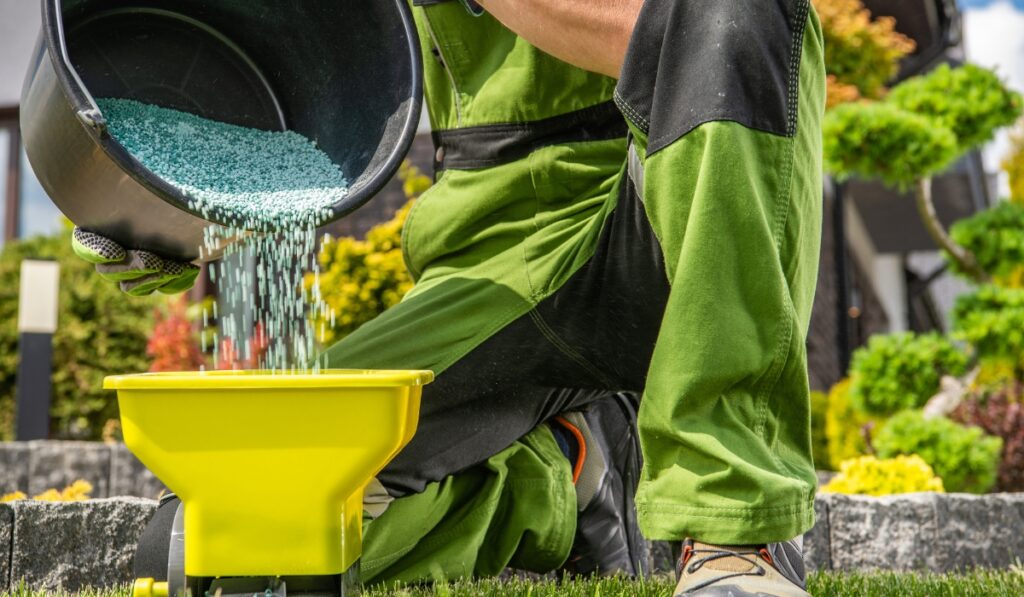
Maintaining a beautiful yard is a year-long commitment that requires careful planning and execution. With each season comes a new set of challenges and opportunities to enhance your outdoor space. This comprehensive guide will walk you through the essentials of year-round yard cleanup and maintenance, ensuring your garden thrives in harmony with the changing seasons.
Spring Awakening
As spring unfurls its fresh canvas, the awakening of your garden heralds a season of rebirth and rejuvenation. This period is pivotal for setting the tone for a flourishing garden throughout the year. Begin with a thorough cleanup, removing winter’s remnants—such as fallen branches, leaves, and other debris—to clear the way for new growth. Pruning plays a crucial role in spring; it not only shapes your plants but also promotes healthy development and blossoming. However, it’s essential to know which plants benefit from spring pruning, as timing can affect flowering and growth.
Aeration is another vital task; it alleviates soil compaction, allowing air, water, and nutrients to penetrate the grass roots, laying the groundwork for a vigorous lawn. Early spring is also the ideal time to rejuvenate your garden beds, preparing them for the season’s planting. Incorporating organic matter or compost improves soil health, providing a nutrient-rich environment for plants to thrive.
As new life sprouts in your garden, consider the layout and plan for seasonal additions. Early spring is an opportune moment to plant hardy annuals and perennials, which will establish themselves quickly in the cool, moist soil, ensuring a vibrant display as the seasons progress. By embracing these springtime rituals, you cultivate not just a garden but a sanctuary that grows in beauty and vitality with each passing year.
Summer Vigilance
In the height of summer, your garden enters a phase of intense growth and vitality, necessitating vigilant care to sustain its beauty and health. This period requires a proactive approach to weed management. Regularly removing weeds prevents them from competing with your plants for essential nutrients and water. Mulching becomes an indispensable ally, serving a dual purpose: it conserves soil moisture, crucial during the sweltering days, and acts as a natural barrier against the emergence of unwanted weeds.
Efficient water management is key during this time. Checking and adjusting your irrigation system ensures that your garden receives the right amount of water without waste, a critical consideration during times of potential drought. Adjusting watering schedules to the cooler parts of the day minimizes evaporation and maximizes the water’s benefit to your plants.
Mowing practices should adapt to the summer conditions as well. Keeping the grass at a slightly longer length than usual helps to protect the roots from the intense sun and heat, promoting a healthier, more resilient lawn. This approach not only enhances the green lushness of your garden but also supports its overall ecosystem, encouraging a balance between beauty and sustainability as the season unfolds.
Autumn Preparation
As autumn paints the landscape in vibrant hues, it’s a signal to start preparing your garden for the impending cold. This season is crucial for maintenance tasks that protect and invigorate your garden’s future growth. Raking and removing fallen leaves are essential to avoid mold and fungus, which thrive under damp, decomposing foliage. Autumn’s cool weather is also ideal for overseeding and fertilizing your lawn, setting the stage for robust, green growth when spring arrives.
Planting bulbs during this time promises the reward of early blooms, offering a burst of color at winter’s end. Additionally, autumn is when you should begin winterizing tasks, such as protecting sensitive plants from frost and preparing irrigation systems for the freeze, ensuring they remain functional for the next growing season. This proactive approach not only preserves your garden’s beauty and health through the winter but also lays the groundwork for a flourishing landscape in the year ahead.
Winter Care
Winter’s quiet might suggest a pause in garden activity, but it’s actually a critical period for protective measures and forward planning. Wrapping plants in burlap or frost cloths shields them from the harshest winter elements, preserving your garden’s vitality. This dormant season offers a valuable opportunity for reflection and strategy: assess the past year’s successes and areas for improvement. It’s a perfect time to dream up new garden layouts or consider different plant varieties that could enhance your garden’s diversity and resilience. Planning during these colder months ensures that you’re ready to spring into action when the weather warms, with a clear vision for your garden’s future.
The Foundation of Flourishing Gardens: Understanding Soil Health

Welcome to another insightful post from DK Landscaping, where we dive into the essentials of creating and maintaining vibrant gardens. Today, we’re focusing on a critical, yet often overlooked, aspect of landscaping: soil health. Understanding and nurturing the soil is the first step towards a flourishing garden. Let’s explore why soil health is foundational and how you can enhance it for a thriving outdoor space.
The Vital Role of Healthy Soil
Soil is not just dirt. It’s a living, breathing entity that plays a crucial role in supporting plant life. Healthy soil fosters a rich ecosystem of bacteria, fungi, worms, and other organisms that work together to break down organic matter, enriching the soil and providing essential nutrients to plants.
Nutrient Availability and Soil Health
Plants rely on soil for water, oxygen, and nutrients. Healthy soil has the right balance of minerals and organic matter, which releases nutrients in a form that plants can absorb. Understanding the nutrient content of your soil is key to identifying which amendments might be needed to support your garden.
Water Retention and Drainage
The structure of healthy soil allows it to effectively retain moisture, providing plants with a consistent water supply. It also ensures proper drainage, preventing waterlogged roots which can lead to plant diseases. Balancing moisture retention with adequate drainage is a hallmark of soil health.
Enhancing Your Soil Health
Testing Your Soil
The first step in improving soil health is understanding its current condition. Soil tests reveal pH levels, nutrient deficiencies, and organic matter content, guiding your amendment choices.
Organic Matter and Composting
Adding organic matter is one of the best ways to enhance soil health. Compost improves soil structure, nutrient content, and microbial activity, supporting vibrant plant growth.
Mulching: A Dual Purpose Ally
Mulching conserves moisture, suppresses weeds, and as it decomposes, adds organic matter back into the soil, improving its health and fertility.
Natural Fertilizers and Amendments
Choosing the right fertilizers and soil amendments is crucial. Organic options like bone meal, blood meal, and green manure can provide necessary nutrients without harming soil organisms.
Embracing Crop Rotation and Cover Crops
In larger garden spaces, rotating crops and using cover crops can significantly improve soil health by preventing nutrient depletion and enhancing soil structure.
The Impact of Soil Health on Garden Success
Healthy soil is the bedrock of a flourishing garden. It supports plant health, aids in disease resistance, and contributes to the overall beauty and productivity of your landscaping efforts.
By investing time and resources into understanding and improving soil health, you’re laying the groundwork for a garden that not only grows but thrives.
At DK Landscaping, we believe that a deep understanding of soil health is essential for any successful landscaping project. By focusing on the foundation beneath our feet, we can create lush, vibrant gardens that are a testament to the power of healthy soil.
Remember, every great garden starts with great soil. Let’s make your garden flourish together.
Saving Water, Beautifying Spaces: Water-Efficient Landscaping Techniques
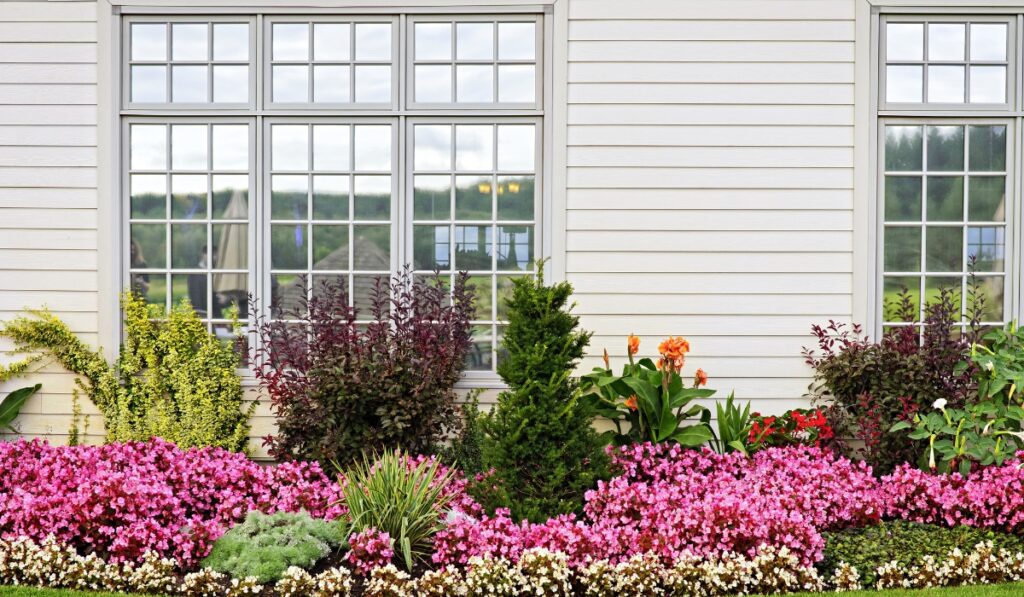
Welcome to the DK Landscaping blog, where we blend beauty with sustainability. In today’s post, we’re diving into the heart of water-efficient landscaping techniques that not only save precious water resources but also transform your outdoor spaces into stunning eco-friendly havens.
Embracing the Basics of Water Efficiency
Understanding Your Landscape’s Needs
Before we start, it’s crucial to understand the unique needs of your landscape. This means assessing soil type, sunlight, and the local climate. By understanding these elements, you can make informed choices that naturally reduce water usage.
The Role of Native Plants
Native plants are the cornerstone of water-efficient landscaping. They’re adapted to the local environment, requiring less water than non-native species. We’ll explore how to select and incorporate these into your design for a resilient and vibrant garden.
Innovative Irrigation Techniques
Drip Irrigation: A Closer Look
Drip irrigation is a game-changer for water efficiency. By delivering water directly to the roots of plants, it minimizes waste and maximizes growth. We’ll guide you through setting up a system that suits your landscape’s specific needs.
Timing is Everything: Smart Irrigation Controllers
Learn how integrating smart irrigation controllers can automate and optimize your watering schedule based on real-time weather conditions, saving water and boosting plant health.
Mulching and Soil Management
The Magic of Mulch
Mulch isn’t just for looks. It plays a pivotal role in retaining soil moisture, regulating temperature, and suppressing weeds. Discover the best types of mulch for your garden and how to apply them effectively.
Soil Amendment Strategies
Healthy soil equals healthy plants. We’ll share tips on improving soil structure and fertility, ensuring your garden thrives while reducing the need for supplemental watering.
Designing with Water Efficiency in Mind
Zoning Your Garden for Water Efficiency
Creating zones in your garden based on water needs can significantly reduce waste. We’ll help you design a layout that groups plants with similar watering requirements together, making your landscape both beautiful and water-wise.
The Beauty of Xeriscaping
Xeriscaping doesn’t mean sacrificing color or variety. Learn how to design a stunning, low-water landscape using drought-tolerant plants and creative design principles.
Beyond the Garden: Rainwater Harvesting
Catching Every Drop: The Basics of Rainwater Harvesting
Rainwater harvesting systems can supplement your water supply beautifully. From simple rain barrels to more sophisticated systems, we’ll show you how to capture and use rainwater effectively in your garden.
The Impact of Water-Efficient Landscaping
Environmental and Economic Benefits
Adopting water-efficient landscaping techniques isn’t just good for the planet—it can also reduce your water bill. We’ll discuss the broader benefits of making these changes, from supporting local ecosystems to contributing to global water conservation efforts.
At DK Landscaping, we believe in creating beautiful, sustainable landscapes that stand the test of time. We hope this guide inspires you to adopt water-efficient practices that make a difference in your garden and the world. Stay tuned for more tips and insights on eco-friendly landscaping. Contact us today if you need help with your landscaping!
Seasonal Landscaping: Tips for Maintaining Your Yard
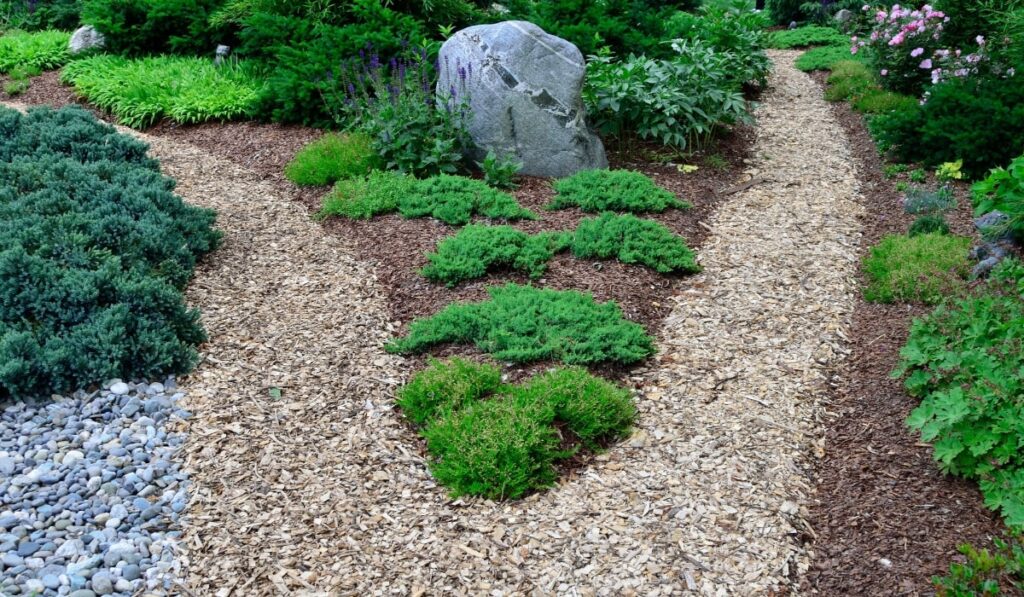
Seasonal landscaping is a practice that involves designing and maintaining outdoor spaces to reflect the changing seasons. This type of landscaping can be used to create a visually appealing and functional outdoor space that is suitable for different seasons throughout the year. Seasonal landscaping involves the use of plants, flowers, and other outdoor features that are specific to each season.
One of the main benefits of seasonal landscaping is that it can help to create a sense of continuity and connection between the indoors and outdoors. By incorporating seasonal elements into a landscape design, homeowners can create a seamless transition between their indoor and outdoor living spaces. This can help to create a more inviting and welcoming environment for guests, as well as a more enjoyable outdoor living experience for the homeowner.
Another benefit of seasonal landscaping is that it can help to increase the value of a property. A well-designed and maintained outdoor space can significantly enhance the curb appeal of a home, which can make it more attractive to potential buyers. Additionally, seasonal landscaping can help to create a unique and memorable outdoor space that sets a home apart from others in the area.
Understanding Seasonal Landscaping
Benefits of Seasonal Landscaping
Seasonal landscaping is an important aspect of maintaining a healthy and beautiful outdoor space. By changing the plants and design elements throughout the year, homeowners can ensure that their yard remains visually appealing and functional. Some benefits of seasonal landscaping include:
- Improved curb appeal: By changing the look of the yard throughout the year, homeowners can improve curb appeal and make their property stand out in the neighborhood.
- Increased property value: A well-maintained yard can increase the value of a property, and seasonal landscaping is an easy way to keep the yard looking its best.
- Enhanced outdoor living: By incorporating seasonal elements such as outdoor seating, lighting, and fire pits, homeowners can create an outdoor living space that can be enjoyed throughout the year.
Key Seasonal Changes
In order to create a successful seasonal landscape, it is important to understand the key changes that occur throughout the year. Some of the most important seasonal changes include:
- Spring: In the spring, homeowners should focus on planting new flowers and shrubs, and preparing the yard for the growing season. This is also a good time to clean up any debris that may have accumulated over the winter.
- Summer: During the summer, homeowners should focus on maintaining the yard and keeping it healthy. This may include watering, fertilizing, and mowing the lawn on a regular basis.
- Fall: In the fall, homeowners should prepare the yard for the winter months by raking leaves and removing any dead plants or debris. This is also a good time to plant bulbs and other plants that will bloom in the spring.
- Winter: During the winter, homeowners should focus on protecting their plants and yard from the cold weather. This may include covering plants, removing snow, and pruning trees and shrubs.
By understanding the key seasonal changes and benefits of seasonal landscaping, homeowners can create a beautiful and functional outdoor space that can be enjoyed throughout the year.
Planning Your Seasonal Landscaping
When it comes to landscaping, planning is crucial to ensure that your outdoor space looks beautiful all year round. This section will provide you with a guide on how to plan your seasonal landscaping, including tips on spring planning, summer upkeep, autumn transition, and winter preparation.
Spring Planning
Spring is the perfect time to start planning your seasonal landscaping. Begin by assessing your outdoor space and identifying any areas that need attention. Consider adding new plants, flowers, or shrubs to add color and texture to your garden. You may also want to consider adding new features such as a water fountain or a seating area.
It’s important to keep in mind the climate and soil type of your area when selecting plants. Make sure to choose plants that are suitable for your climate and soil type to ensure that they thrive. Also, consider the amount of sunlight your garden receives and choose plants accordingly.
Summer Upkeep
Summer is the time when your garden is in full bloom. It’s important to keep up with regular maintenance during this season to ensure that your garden stays healthy. This includes watering your plants regularly, removing weeds, and pruning any overgrown branches.
You may also want to consider adding mulch to your garden beds to help retain moisture and prevent weed growth. Additionally, consider adding a layer of fertilizer to promote healthy growth.
Autumn Transition
As the weather begins to cool down, it’s time to prepare your garden for the fall season. This includes removing any dead plants, leaves, and debris. You may also want to consider adding new plants that thrive in cooler temperatures such as mums or asters.
It’s also a good time to prepare your garden for the winter season by adding a layer of compost or mulch to protect your plants from the cold weather.
Winter Preparation
Winter can be harsh on your garden, so it’s important to prepare it for the colder months. This includes removing any dead plants, leaves, and debris. You may also want to consider covering your plants with burlap to protect them from frost and snow.
It’s also important to drain any water features and store outdoor furniture to protect them from the elements. Finally, consider adding some winter interest to your garden by adding evergreen plants or winter-blooming flowers.
By following these tips, you can ensure that your garden looks beautiful all year round. Happy landscaping!
Seasonal Planting Strategies
Selecting Plants for Each Season
When it comes to seasonal landscaping, selecting plants that are suitable for each season is crucial. Different plants thrive in different seasons, so it is important to choose those that will grow well during the time of year you want them to bloom.
For example, in the spring, you might consider planting bulbs such as tulips, daffodils, and hyacinths. These plants are perfect for adding color and vibrancy to your garden after a long, cold winter. In the summer, you might opt for flowering annuals, such as petunias, marigolds, and zinnias, which will add a burst of color to your garden beds.
In the fall, you might choose to plant mums, asters, or other autumn-blooming perennials. These plants will add warmth and depth to your garden as the temperatures begin to cool. And in the winter, you might consider planting evergreens, such as holly, spruce, or pine, which will provide a beautiful backdrop for your winter landscape.
Rotating Crops and Flowers
Another important strategy for seasonal landscaping is rotating crops and flowers. This involves planting different crops or flowers in the same location each year, which helps to prevent soil-borne diseases and pests from building up in the soil.
For example, if you planted tomatoes in a particular garden bed one year, you might choose to plant cucumbers or peppers in that same bed the following year. This will help to keep the soil healthy and productive, while also ensuring that your plants have the best chance of thriving.
By following these seasonal planting strategies, you can create a beautiful and thriving landscape that changes with the seasons. Whether you’re planting bulbs in the spring or evergreens in the winter, there’s always something new and exciting to look forward to in your garden.
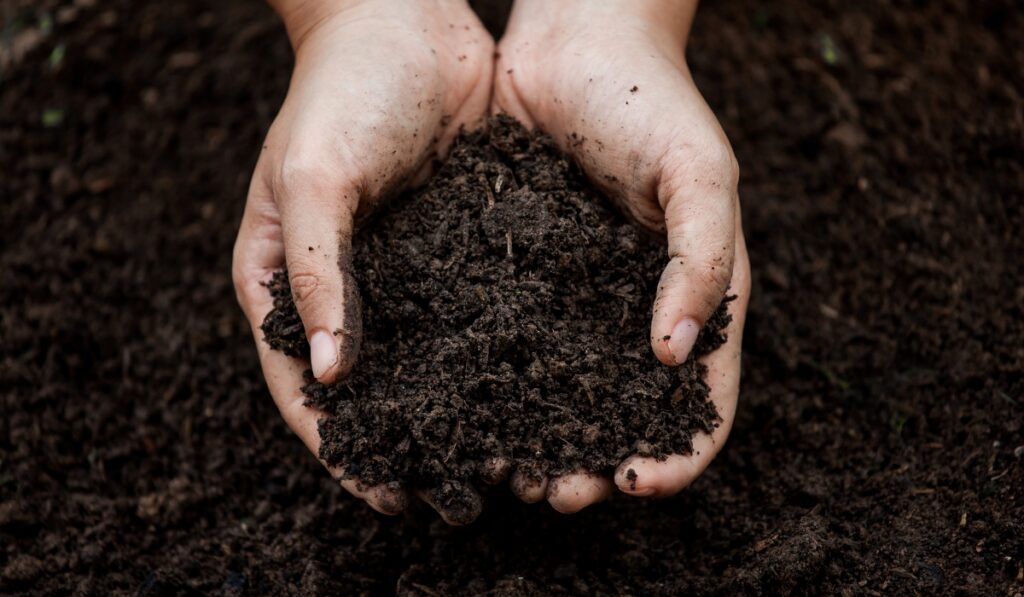
Maintenance and Care
Soil Health and Fertilization
Maintaining healthy soil is crucial for the success of any landscaping project. Soil should be tested before any fertilization is applied to determine its nutrient content. Fertilizers should be chosen based on the soil’s needs and applied according to the manufacturer’s instructions. Organic fertilizers are a great option for those who want to avoid synthetic chemicals. Mulching can also help improve soil health by retaining moisture and adding organic matter.
Pruning and Weeding
Pruning and weeding are essential for maintaining the appearance and health of a landscaped area. Regular pruning helps to shape plants, remove dead or damaged branches, and promote healthy growth. Weeding helps to control the spread of unwanted plants and prevent competition for resources. It is important to use the proper tools and techniques when pruning to avoid damaging the plant.
Irrigation and Water Management
Proper irrigation and water management are critical for maintaining a healthy landscape. Overwatering can lead to root rot and other issues, while underwatering can cause plants to wilt and die. Watering should be done in the early morning or late evening to minimize evaporation. Drip irrigation systems are a great option for those who want to conserve water and minimize runoff. It is important to monitor soil moisture levels and adjust watering schedules accordingly.
Frequently Asked Questions
What are the best months to schedule landscaping services?
The best months to schedule landscaping services depend on the type of service needed. For planting, the ideal time is usually during the spring or fall seasons when the temperatures are mild. For lawn care, the best time is during the summer months when the grass is actively growing. It is recommended to consult with a professional landscaper to determine the best time for specific services.
How can I maintain my landscape throughout the year?
Maintaining a landscape throughout the year requires regular care and attention. This includes watering, fertilizing, pruning, and weeding. It is also important to monitor the health of plants and address any issues promptly. A professional landscaper can provide guidance on the specific care requirements for different types of plants and landscapes.
What are cost-effective strategies for beautiful landscaping?
Some cost-effective strategies for beautiful landscaping include using native plants, incorporating mulch to retain moisture and suppress weeds, and using low-maintenance plants. It is also important to plan and design the landscape carefully to ensure that it is functional and visually appealing.
How should I prepare my garden for the spring season?
Preparing a garden for the spring season involves cleaning up the landscape, removing any dead or damaged plants, and preparing the soil for planting. It is also important to fertilize and prune plants as needed. A professional landscaper can provide guidance on the specific steps needed to prepare a garden for the spring season.
What is included in a typical landscape maintenance checklist?
A typical landscape maintenance checklist includes tasks such as mowing the lawn, trimming shrubs and trees, fertilizing, watering, and weeding. It may also include tasks such as pest control, pruning, and mulching. A professional landscaper can provide a customized maintenance checklist based on the specific needs of the landscape.
What steps are necessary to winterize my landscaping?
Winterizing a landscape involves preparing plants and trees for the colder temperatures. This includes trimming back any dead or damaged branches, wrapping delicate plants with burlap or other protective material, and applying a layer of mulch to protect the soil. It is also important to turn off and drain any outdoor water features to prevent damage from freezing temperatures. A professional landscaper can provide guidance on the specific steps needed to winterize a landscape.
Water-Saving Tips for Your Garden
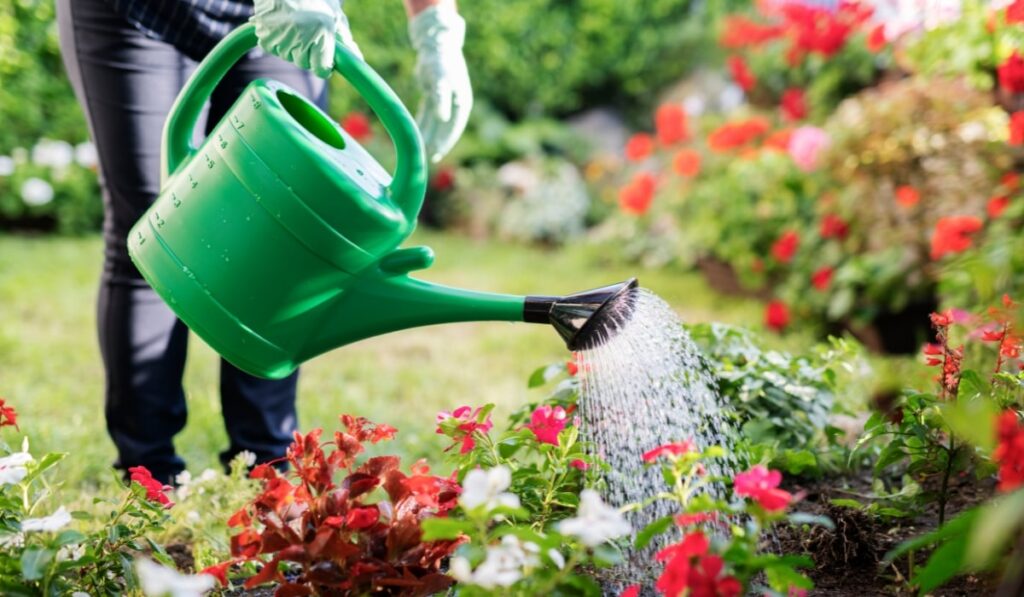
Gardening is a great way to beautify your home while also providing fresh produce. However, it can also be a significant source of water consumption. With water becoming an increasingly scarce resource, it’s important to find ways to conserve it. Water-saving tips for your garden can help you save water and reduce your water bill.
There are many ways to save water in your garden. One of the easiest ways is to choose plants that are well-suited to your climate and soil type. These plants will require less water and maintenance, saving you time and money. Another way to save water is to use mulch around your plants. Mulch helps to retain moisture in the soil, reducing the need for frequent watering.
In addition to these tips, there are many other water-saving techniques that you can use in your garden. From using drip irrigation systems to collecting rainwater, there are many ways to conserve water while still maintaining a beautiful garden. By implementing these tips and techniques, you can reduce your water consumption and help to protect this valuable resource.
Efficient Watering Practices
Understanding Soil and Plant Needs
One of the most important things to consider when it comes to efficient watering practices is understanding the soil and plant needs. Different types of soil have different moisture retention properties, which means that some soils will require more water than others. For example, clay soil tends to hold onto water for longer periods of time than sandy soil, which means that plants growing in clay soil will require less frequent watering.
Additionally, it’s important to consider the type of plants that are being grown in the garden. Native plants and drought-tolerant plants are great options for conserving water in the garden, as they are adapted to the local climate and require less water to thrive. On the other hand, plants that are not well-suited to the local climate will require more water to stay healthy.
Watering Techniques and Scheduling
Another important aspect of efficient watering practices is using the right watering techniques and scheduling. For example, morning watering is generally recommended as it allows plants to absorb moisture before the heat of the day causes evaporation. Deep watering is also important, as it encourages plants to develop deep root systems that can better withstand dry spells.
It’s also important to consider the timing and frequency of watering. Overwatering can lead to fungal diseases and runoff, which can be harmful to the environment. Gardeners should aim to water their plants only when necessary, and to avoid watering during periods of rain or high humidity.
Irrigation System Efficiency
For those who use an irrigation system, it’s important to ensure that the system is as efficient as possible. This can be achieved by using water-efficient emitters, installing a rain-shutoff device, and regularly checking and maintaining the system. Irrigation system controllers can also be used to schedule watering times and ensure that water is not wasted.
In addition to these tips, gardeners can also consider using rain barrels or other rainwater harvesting systems to save water in the garden. Mulching and composting can also help to conserve water and improve soil moisture retention. By following these water-saving tips and using efficient watering practices, gardeners can help to promote sustainability and conserve water in their gardens.
Sustainable Garden Design and Maintenance
Choosing the Right Plants
Choosing the right plants for a sustainable garden is crucial. Native plants, drought-tolerant plants, succulents, and perennials are great options for water-saving gardens. These plants require less water, are adapted to the local climate, and are more resistant to pests and diseases. Yucca and verbena are examples of beautiful and low-water-use plants that can thrive in a water-saving garden.
Mulching and Ground Cover
Mulching is an effective way to reduce water usage in the garden. Organic mulch such as lawn clippings, leaves, and compost can help retain moisture in the soil, prevent weed growth, and improve soil health. Ground cover plants such as creeping thyme, clover, or sedum also help to retain moisture and reduce erosion.

Alternative Water Sources and Collection
Using alternative water sources can be a game-changer for water-saving gardens. Rainwater harvesting is a great way to collect water for the garden. Installing a rain barrel or water tank can help to store and use rainwater for irrigation. Ollas are also a great way to save water. These clay pots are buried in the soil and slowly release water to the roots of the plants, reducing water waste and promoting plant growth.
By implementing sustainable garden design and maintenance practices such as choosing the right plants, mulching and ground cover, and using alternative water sources, gardeners can create beautiful and thriving gardens while conserving water and promoting sustainability.
Frequently Asked Questions
What are effective methods for reducing water usage in your garden?
There are several effective methods for reducing water usage in your garden. One of the most effective ways is to choose plants that are native to your region and are adapted to the local climate. These plants will require less water and maintenance compared to non-native plants. Additionally, using mulch around the plants can help retain moisture in the soil, reducing the need for frequent watering.
How can you conserve water when maintaining a vegetable garden?
To conserve water when maintaining a vegetable garden, it is important to water the plants deeply but less frequently. This encourages the roots to grow deeper and access water from lower layers of soil. Additionally, using drip irrigation or a soaker hose can help deliver water directly to the roots, reducing water waste. Using a rain barrel to collect rainwater can also provide a free source of water for your garden.
What are the benefits of watering plants early in the morning for water conservation?
Watering plants early in the morning is beneficial for water conservation because the cooler temperatures and lower wind speeds help reduce evaporation. Additionally, watering in the morning allows the plants to absorb the water before the heat of the day, reducing the risk of water stress.
What personal habit changes can lead to significant water savings in garden care?
Personal habit changes that can lead to significant water savings in garden care include using a broom instead of a hose to clean patios and driveways, fixing leaks in hoses and sprinklers, and using a bucket instead of a hose to wash cars. Additionally, reducing the frequency of lawn watering and using drought-tolerant plants can help save water.
How can you utilize greywater from showers and baths for gardening purposes?
Greywater from showers and baths can be utilized for gardening purposes by diverting the water to a holding tank or directly into the garden. However, it is important to use biodegradable and non-toxic soaps and detergents to avoid harming the plants. It is also recommended to use greywater for non-edible plants only.
What are the most efficient irrigation techniques for minimizing water waste in gardens?
The most efficient irrigation techniques for minimizing water waste in gardens include drip irrigation, soaker hoses, and micro-sprinklers. These methods deliver water directly to the roots of the plants, reducing water waste due to evaporation and runoff. Additionally, using a rain sensor or a smart irrigation controller can help adjust watering schedules based on weather conditions, further reducing water waste.
Choosing the Best Evergreens for Your Landscape
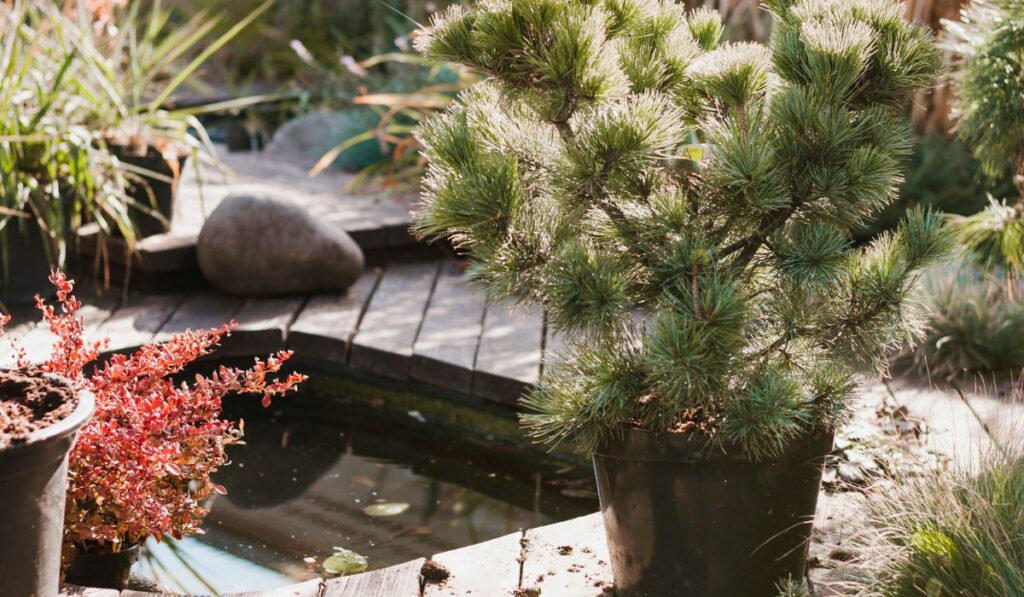
In the world of landscaping, evergreens are akin to the steadfast friends who stand by you year-round, irrespective of the season. They provide a constant splash of color when the rest of your garden has succumbed to the winter chill.
At DK Landscaping, we understand that choosing the right evergreens is crucial to ensuring your garden remains vibrant and dynamic throughout the year. Here’s a comprehensive guide to help you with your evergreen landscaping projects.
Understand Your Landscape’s Needs
Before diving into the plethora of evergreen landscaping options, it’s essential to assess the specific needs of your landscape. Consider the following:
- Climate Zone: Evergreens vary in their hardiness. Ensure the species you choose can thrive in your area’s climate.
- Soil Type: The success of an evergreen largely depends on the soil it’s planted in. Know your soil type and choose plants that will flourish in those conditions.
- Space and Size: Account for the mature size of the evergreen to ensure it fits well in your space without overcrowding.
- Sunlight: Some evergreens prefer full sun, while others thrive in partial shade. Understand the sunlight patterns in your landscape to make an informed choice.
Types of Evergreens
Evergreens come in various forms – trees, shrubs, and groundcovers. Each brings its unique aesthetic and functional qualities to your landscape.
Evergreen Trees
- Spruce (Picea spp.): With their classic Christmas tree shape, spruces are a popular choice. They offer dense foliage and can act as excellent windbreaks or privacy screens.
- Pine (Pinus spp.): Pines are known for their long, slender needles and are often used for their fast growth and stately appearance.
- Cedar (Cedrus spp.): Cedars are valued for their distinctive, often aromatic wood and rugged, shaggy appearance, adding a rustic charm to the landscape.
Evergreen Shrubs
- Boxwood (Buxus spp.): Boxwoods are versatile shrubs, perfect for creating hedges or topiaries. They’re known for their dense, bright green foliage and ease of maintenance.
- Rhododendron (Rhododendron spp.): Besides evergreen foliage, rhododendrons offer spectacular blooms, adding a splash of color to your garden in the spring.
- Holly (Ilex spp.): With their glossy leaves and bright red berries, hollies are both beautiful and great for attracting wildlife.
Evergreen Groundcovers
- Juniper (Juniperus spp.): Junipers are low-maintenance groundcovers that provide excellent erosion control on slopes and add texture to the landscape.
- Creeping Phlox (Phlox subulata): While not evergreen in the traditional sense, creeping phlox offers early spring flowers and retains its needle-like leaves year-round.
- Pachysandra (Pachysandra terminalis): This groundcover thrives in shaded areas where other plants struggle, providing a lush, green carpet.

Aesthetic Considerations
Evergreens are not just about green. They come in a spectrum of colors – from the blue-green hues of the blue spruce to the golden tips of the ‘Sunshine’ ligustrum. The texture of the foliage can also vary greatly, from the soft, feathery fronds of a fern pine to the rigid, needle-like leaves of a holly.
When selecting evergreens, consider how their color, texture, and form will complement your existing landscape. Think about how they will look during different seasons and at various times of the day.
Practical Considerations
Beyond aesthetics, evergreens serve practical purposes in a landscape:
- Privacy: Tall evergreens like arborvitae or clumping bamboo can create a natural privacy screen.
- Windbreaks: Dense evergreens can protect your home and garden from harsh winds.
- Sound Barrier: The thick foliage of evergreens can help reduce noise pollution.
- Wildlife Habitat: Many evergreens provide shelter and food for birds and other wildlife.
Evergreen Maintenance and Care
While evergreens are generally low-maintenance, they do require some care:
- Watering: Newly planted evergreens need regular watering until they’re established. Even drought-tolerant varieties may need extra water during prolonged dry spells.
- Pruning: While most evergreens require little pruning, some may benefit from occasional trimming to maintain shape and health.
- Pest and Disease Management: Be vigilant about pests and diseases. Early detection and treatment can prevent serious damage.
Making the Choice is Ultimately Up to You
When choosing evergreens for your landscape, it’s not just about picking a plant; it’s about creating an ambiance, fulfilling practical needs, and ensuring the overall health and beauty of your garden. At DK Landscaping, we believe that with the right knowledge and a thoughtful approach, you can transform your landscape into a year-round haven of tranquility and beauty.
For More Evergreen Landscaping Ideas, Contact DK Landscaping
Selecting the right evergreens is a nuanced process that involves understanding your landscape’s specific needs, the unique characteristics of different evergreens, and how they fit into the broader aesthetic and practical context of your garden. With careful consideration and a strategic approach, you can ensure that your landscape remains vibrant and dynamic throughout the year, offering a serene and inviting outdoor space that reflects your personal style and meets your practical needs.
Remember, your landscape is a living, evolving canvas, and the evergreens you choose are the strokes that define its character and beauty across seasons. Contact DK Landscaping now for help with your evergreen landscaping projects!


